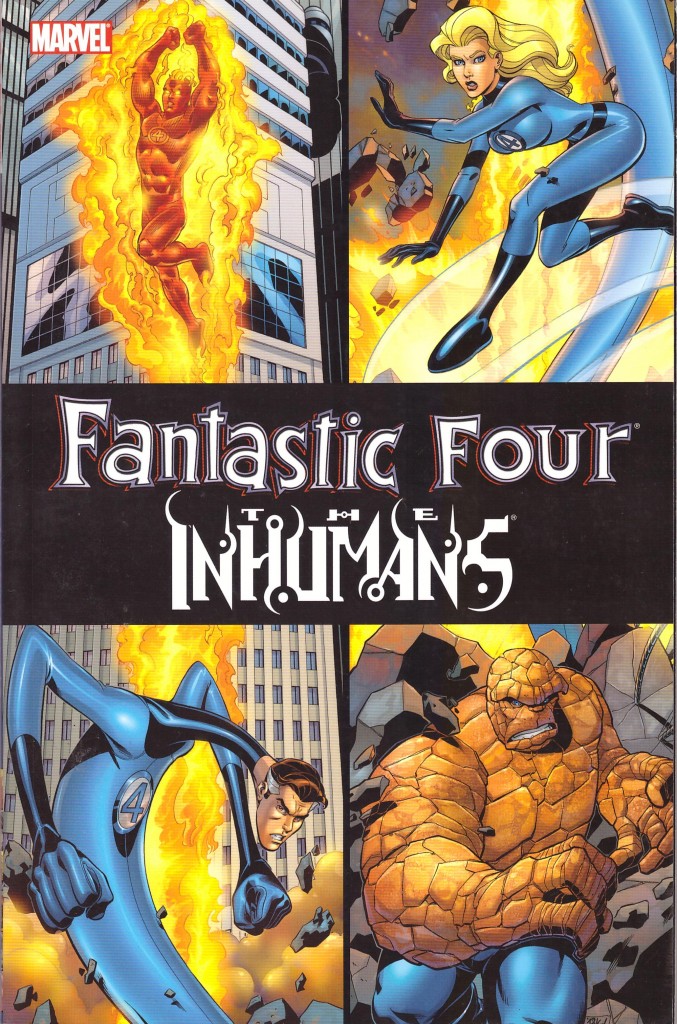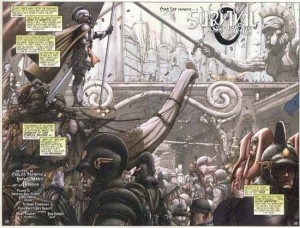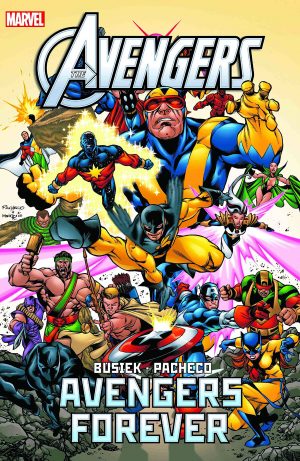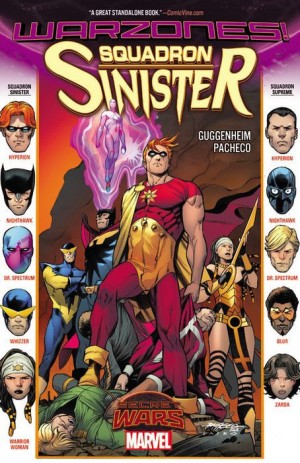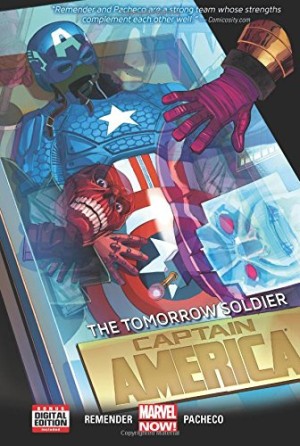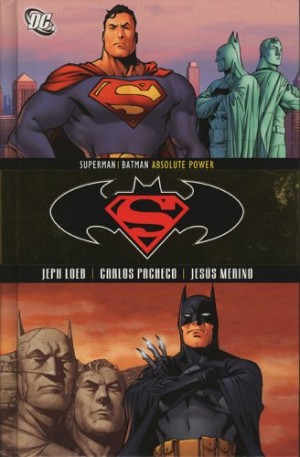Review by Ian Keogh
The art makes Fantastic Four/The Inhumans a schizoid collection, accentuated by the title billing being reversed for the actual presentation, which leads with the Inhumans. The connection is the writing team of Carlos Pacheco and Rafael Marín being responsible for plotting both stories, and they’re both good.
Pacheco and Marín slightly reconfigure the origins of the Inhumans and their background with a clever piece of extra information that bolsters the main story. It was long ago revealed that they’re a genetic offshoot of the Kree race, and for centuries on reaching puberty their children have entered the Terrigen Mists to transform them into a unique form differing from every other Inhuman. It transpires this has a greater application than the previously assumed random generation. The plot has the Kree enslaving the Inhumans and using their variety of powers as a unique combat force for galactic conquest.
José Ladronn’s art is astonishing. He fuses the delicate line of Moebius with the energy and design sense of Jack Kirby and the metallic tones of H.R. Giger, and with that comes a compulsion for rendering the slightest detail. The costumes, armour and background are almost obsessively filled with tiny mechanical elements creating a bewildering complexity that successfully interprets an advanced society. How could anyone possibly understand the purpose of all this machinery? He also uses a lot of small panels that on occasion convey as impressive messiness. Jorge Pereira Lucas illustrates the final chapter with less sheen and greater grit, but maintains the overall look for the sake of consistency.
The density of the plot mirrors that of the art, with a lot of ground covered in just over eighty pages. The writers prioritise political machinations, dredging more and more beings from obscurity and providing them a greater purpose as they construct a new web of Marvel’s alien races and their customs. A coming assassination sustains suspense and the plot is twisted in surprising fashion in a thrilling final chapter. Involving the Inhumans in space opera would be picked up and continued over the following decade.
When the Inhuman royal family return to Earth it’s in the pages of Fantastic Four and the very different art of Mark Bagley. His are large panels with close-up views, and the body proportions aren’t always the best, but he tells a story well and there’s a decent story to tell. The prologue is key, the consequences of its events taking some time to unfurl among a plot of the Inhumans seeking sanctuary on Earth and others of their race already there. A debate on xenophobia is opened, and if not exactly subtle, it’s a more condensed version of the arguments providing years of X-Men plots. This section has Karl Kesel writing the dialogue over Pacheco and Marin’s plot, and he sticks very much to superhero shorthand, over-egging and underlining, but the plot is strong enough to overcome this. It involves Doctor Doom, Susan Storm’s second pregnancy and the Human Torch as a Hollywood actor. It lacks the cosmic scope of the Inhumans story, but is imaginative fun with fair number of surprise, and finally wraps up a sub-plot the writers introduced three books previously in Flesh & Stone.
It concludes Pacheco and Marín’s run on Fantastic Four, and imaginative fun with a fair number of surprises about sums it up. It’s been very quickly forgotten, and deserves better.
